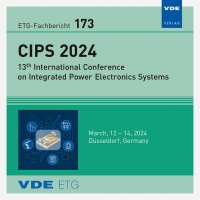Nickel as Phase Growth Accelerator in Ternary Solder Systems
Konferenz: CIPS 2024 - 13th International Conference on Integrated Power Electronics Systems
12.03.2024-14.03.2024 in Düsseldorf, Germany
Tagungsband: ETG-Fb. 173: CIPS 2024
Seiten: 6Sprache: EnglischTyp: PDF
Autoren:
Richter, Jessica; Kopczynski, Anna; Schellscheidt, Benjamin; Licht, Thomas (Faculty of Electrical Engineering and Information Technology, Department of Microelectronics, Hochschule Düsseldorf - University of Applied Sciences, Germany)
Inhalt:
This paper explains the influence of Nickel on solder interfaces in combination with Tin-based solder and a high amount of Copper in the same system. Inequalities in thermomechanical properties of materials at interfaces of a modern power electronic package lead to a rise in periodic stresses during normal operation, making these sites crucial to the integrity of the entire product. Proper lifetime analysis of interconnects is a challenge. Knowledge of the formation of intermetallic phases (IMPs) and the material properties of these IMPs are essential for the data basis of further simulations and evaluation of the reliability of interconnections. We present research on a system solder of a power electronic module baseplate and ceramic substrate. The baseplates of these modules consist of a metal matrix composite material, which needs to be coated to become solderable. Today, it is state of the art technology to coat the baseplate with electroplated Nickel to form an adhesion layer to the system solder. We substitute the electroplated Nickel with physical vapor deposited (PVD) Nickel. The substrate, which forms the other solderable surface, is coated with an electroless Nickel coating. Our used Tin-based solder preform consists of two layers of SnAg3.5 with a Copper core. The investigation of these interconnecting systems show that various Nickel coatings behave differently with respect to phase formation. We analyse a wide range of samples of varying solder time and temperature. For PVD Nickel, we observe faster phase growth due to increased interdiffusion behaviour and higher Nickel concentration in the resulting intermetallic phases in contrast to the standard electroplated Nickel coating. The phase formation at the ceramic substrate side of the solder is not significantly increased under the same conditions, despite the increased amount of copper available in the system. We compare these findings in our mathematical phase formation model based on diffusion mechanisms and investigate the different activation energies.


